In my roles as a survival instructor, emergency preparedness writer, and CERT Program Director, I have come across a lot of claims about water storage and treatment technology and practices.
Some of them are true and some are fabrications. How can consumers of water storage and treatment equipment tell which equipment will save lives and which will get them sick?
I normally cringe when hearing the word “overwhelming” used in conjunction with emergency preparedness because the more prepared you become, the less afraid you should be, and the less overwhelmed you should feel. But in the case of water treatment, I understand. From the consumer perspective, there is a lot of information to digest and fact check. You have to decide how much water to store, how to do it, and which treatment methods to invest in … and all that can indeed seem a little overwhelming.
To answer these questions for myself and for my readers, I have done a lot of research and field testing and have attended a lot of training. At one of the water-treatment classes I attended, I met a water quality scientist named Max Gyllenskog. He tests water treatment products and storage methods by testing water samples in the water quality lab at our County Health Department. He also flies all over the world to set up water treatment in the wake of disasters and way too many letters come after his name to list. So, his recommendations aren’t the typical, “Well, I used such and such backpacking for a week and I didn’t get sick!” He tests water treatment methods and products in a lab and can tell you how many pathogens were in the sample before and after treatment and he blew many of the misconceptions that I had right out of the water … no pun intended.
Common Myths & Misconceptions
Mini in-line micro-tubule water filter capacity
You may have heard the sales propaganda that a Sawyer (or any other) mini in-line micro-tubule water filter can filter 200K gallons of untreated surface water! That’s just not true. In fact, the claim is downright outlandish. Any company that makes claims like that should be ashamed of themselves and if you believe it, you should probably have your BS-meter recalibrated.
Mini in-line filters filter water through tiny microtubules that clog easily, even when using a strainer and pre-filter, and must be backflushed. As the foreign matter is compacted into a filter’s microtubules and pushed back out, it wears on the filter and this wear eventually causes microscopic cracks. There is no way to detect these cracks and they allow contaminated water to pass through the filter and into its output. Once micro-cracks develop, a filter still eliminates some pathogens from the water, but not at the rate claimed. Ice crystals also cause cracks, so don’t allow a micro-tubule filter that has been used to freeze.
How much water can little in-line filters really filter? A realistic volume is around 100 gallons, which is a lot of drinking water in a survival situation. I still use inline filters, but I only brand that make reasonable claims.
I store Household Bleach is the Go-to Water Treatment Method
Household bleach could save your life, but it isn’t good for you. Using too much can kill you and use too little won’t kill all the pathogens. Since bleach gets weaker as it ages, it’s recommended that you use chlorine test strips to measure the amount of free chlorine available in treated water. The recommended treatment method for treating drinking water in most emergencies is boiling. By the time water gets up to a rolling boil, the pathogens in it will die. And that’s true even at high altitude on Mount Everest.
I have a well, so I don’t need water storage
Many of the same factors that affect the quality of city water, also affect the quality of well water. An earthquake that stirs up sediment in your city’s water lines, may also stir up sediment in your well. You should still store water even if you own a well. In fact, you’ll also need equipment to bring up well water when the power is out and test kits to periodically test the water that comes from your well.
All I need is …
Water treatment methods include boiling, disinfection using various chemicals, filtration, exposure to UV light, desalination, distillation and even allowing plants to carry out disinfection for you. Each of these methods has strengths and weaknesses and what is appropriate for one situation may not be appropriate in another.
While boiling may be the recommended method, sometimes it may not be safe to create a fire, or you may lack the fuel to do so. Some chemical disinfection methods are lightweight but leave behind an undesirable aftertaste that can turn keeping kids hydrated into a battle. The point is to learn multiple methods to treat water and know when each method is and is not appropriate to use.
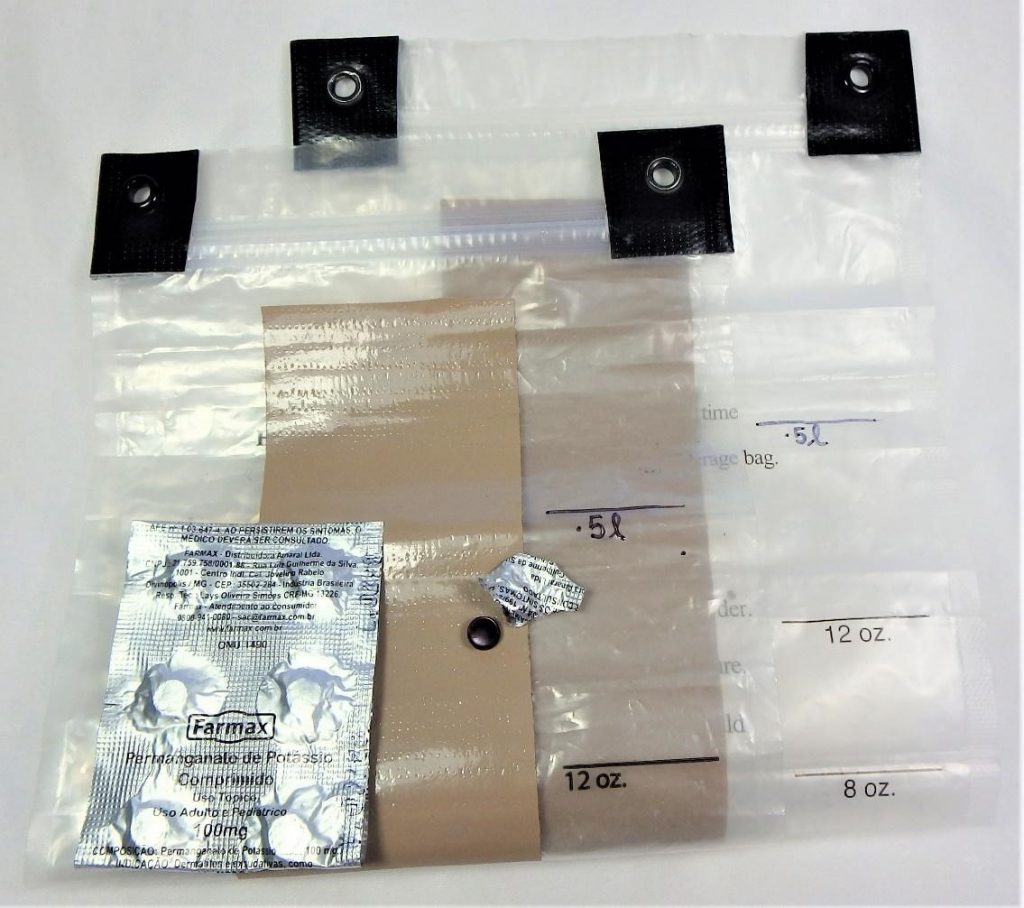
How to Store Water for 25 Years or More
Some organizations recommend rotating stored water every six months! That is a lot of work and fortunately, it is totally unnecessary. If you follow the directions below, the drinking water you store should last twenty-five years or even longer.
How Much Water Should I Store?
While the government recommends a minimum of one gallon (4 liters) per person per day or 14 gallons (56 liters) per person. This ration allows 2 quarts (2 liters) to drink for 2 weeks and 2 quarts (2 liters) for food preparation and sanitation, you need more than this in hot climates, extremely cold climates, at high altitude, and during periods of exertion, such as emergencies. The young, old, sick, and nursing mothers also need more than this. For these reasons, I suggest at least doubling this to 2 gallons (8 liters) per person per day for a minimum of two weeks or 28 gallons (112 liters) per person. If you don’t have nearby access to surface water, I would consider increasing these numbers.
Remember, these numbers reflect the minimum volume of water that you should store. If you have the means to store more water, do.
Choose Storage Containers
What kind of storage container should I use?
Don’t use milk cartons because you’ll never get the milk proteins out of the plastic and they’ll give bacteria food they need to multiply.
Don’t use barrels previously used to store fruit juice. As with milk cartons, the sugars in the fruit juice embed in the plastic, feeding bacterial growth. Vendors often advertise them as food grade, but they are not recommended for long-term storage of emergency drinking water.
Use opaque containers labeled “HDPE” & “2”. Where possible, use containers designed for long-term water storage. If you store water in 55-gallon drums, you’ll also need a bung wrench and a siphon hose. A standard shaker siphon approved for drinking water will do. Don’t bother with the plastic pump siphons sold by many emergency preparedness stores because they are very poor quality.

Store water in more than one container so you don’t lose your entire water supply if the container becomes compromised. Some of these containers should be large, so you can store plenty of water, but others should be smaller so smaller amounts of water can be transported where they are needed. You’ll also need buckets for hygiene and may also need a cart to haul water home from a nearby water source.
How heavy of a container can you handle? Water weighs eight pounds (3.6kg) per gallon, so choose a size of container that can be easily handled by all members of your household where possible.
Cleaning Containers
Previously used or opened containers must be cleaned before use.
- Wash with dishwashing soap and water.
- Rinse thoroughly with potable water.
- Sanitize with bleach solution. Mix one teaspoon of unscented liquid chlorine bleach (5-6% sodium hypochlorite) in a quart of potable water.
- Cap the container and shake it so the bleach solution coats every surface of the container.
- Back the cap off to where it is loose and then momentarily invert the container to coat the cap and threads as well.
- Wait at least 30 seconds.
- Empty the container.
- Rinse the container twice with potable water.
If you are using brand new, never opened plastic drums, disinfection is not necessary because they are formed (and caps are installed) at high-enough temperatures that they’re sterile inside. You should give them a good rinsing though to rinse out any plastic leftover from the manufacturing process.
Filling Containers
Fill containers with tap water. Here in the USA, water the comes out the tap has already been treated and is safe to store “as is.” Fill containers full unless they may freeze during winter. In that case, fill them to the freeze line or above depending on how thick ice gets in your neck of the woods. Full containers store longer than partially full ones. While freezing 55-gallon drums is unlikely in most of the lower forty-eight states, the smaller a container is, the lower the thermal mass of the water it contains, and the more likely it could be damaged by freezing.
Garden hoses contain bacteria and sometimes even contain contaminants such as lead, so don’t use them to fill your water containers or you’ll contaminate the container you just disinfected. Fill your containers with an RV drinking water hose instead.
If your water is stored properly, it’s not necessary to add an additive, but if you would like to, Max recommends a silver/copper ion solution. The reason is that while chlorine-based products will disinfect the water at the outset, after that they diminish in effectiveness over time, whereas the silver/copper ion solution persists and will continue to deactivate pathogens as long as it remains in the water.
Storing Water
Water is best stored somewhere cool, dark, and dry. It should not be stored in direct sunlight, so cover barrels stored outside with a tarp. Moisten gaskets regularly to prevent them from drying out and breaking the seal, as an airtight seal should be maintained. Inspect containers annually and don’t open them until you decide to use or replace the water.
Experts disagree whether it is necessary to elevate water containers, so they do not rest directly on a cement pad. The idea is that cement off-gassing can penetrate plastic drums, contaminating the water inside. Because the cost of setting drums on 2×4’s is negligible and it certainly won’t cause any harm, the practice is recommended.


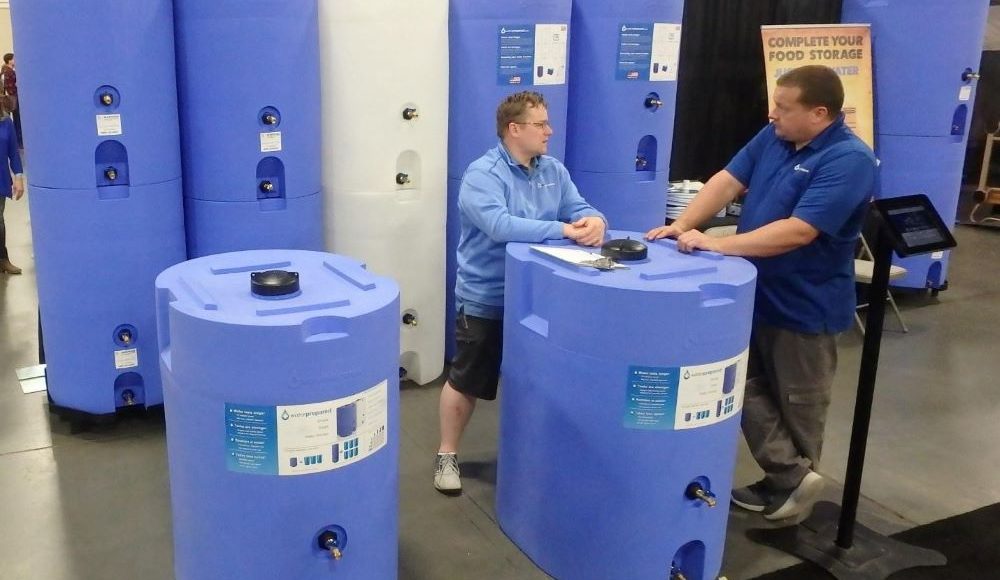
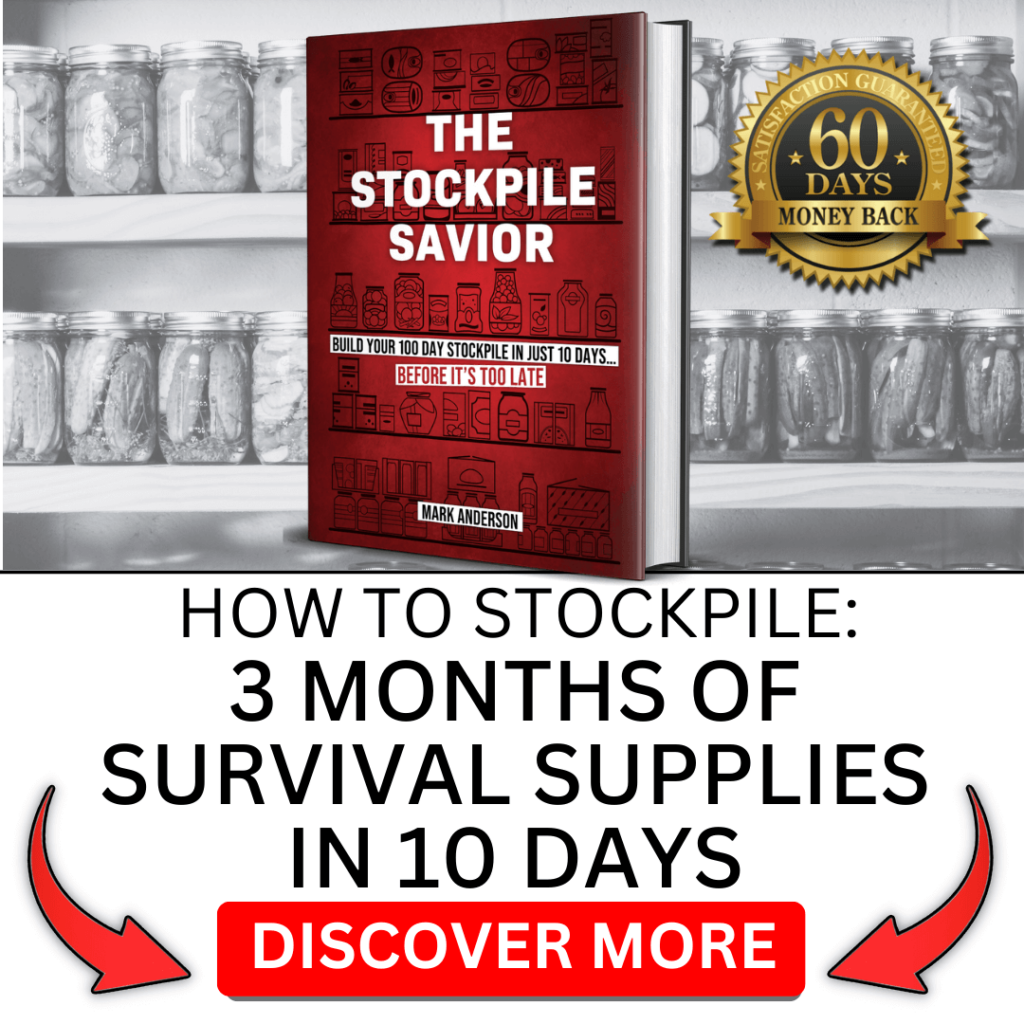


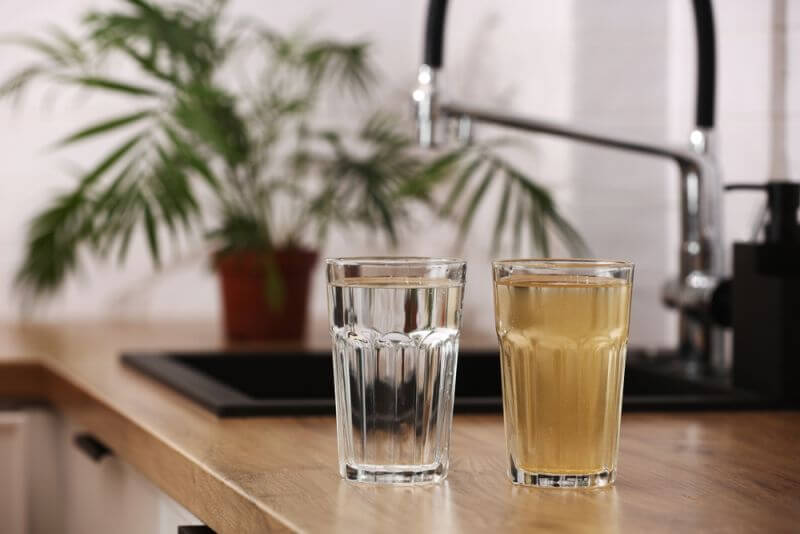
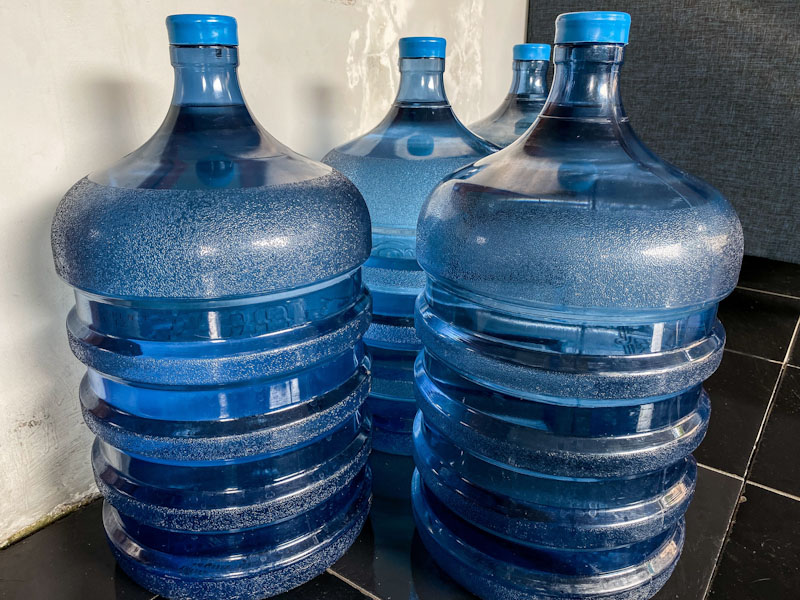

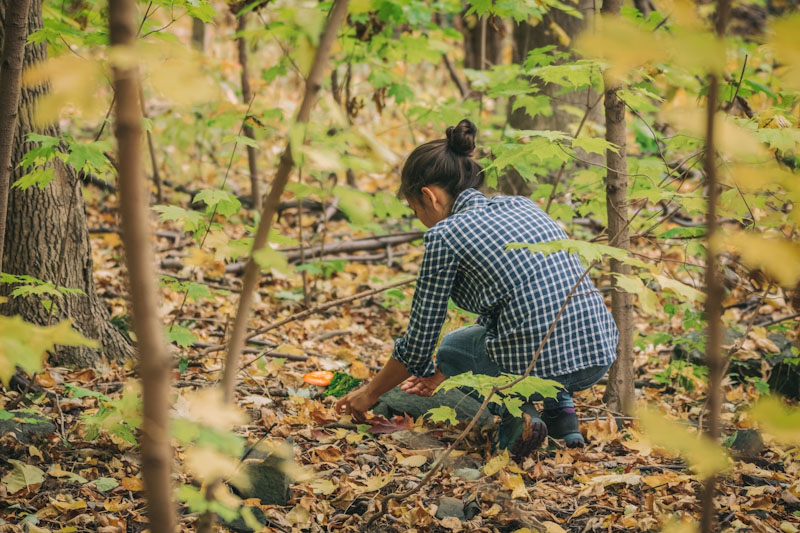

North*Star | October 11, 2020
|
Good info–
So what is a brand name(s) of a “silver/copper ion” solution for storage use — so that one can find it for sale
Thanks??
Tom Smokoff | January 3, 2022
|
The product name is H2O ResQ developed and manufactured by Water Pure Technologies
Paradisa | October 11, 2020
|
What about well water that is not treated but is filtered? Will that store for 25 years as is or does something need to be added.? If so what?
I do not use bleach.
I have previously stored gallon containers of well water that I added stabilized oxygen to, supposed to last 5 years.. Has your water expert tested stabilized oxygen for water storage, if so what does he think?
After the 5 years are up can I just add more stabilized oxygen to make the water last amother 5 years or do I need to dump it and start over? Thank you for your time on this subject.
JC Hickory | May 23, 2021
|
Personally, I can my water in mason jars. It’s bulky, but I have a large basement. I only have 30 gallons for my wife and I, but my hot water tank provides us with another 44 gallons of potable water.. in addition to this, we have two creeks that flow just outside of our town. Ihave 6 5 gallon buckets for collection. If this isn’t sufficient, we are headed to our bug out location by a lake. Our water is treated, but the canning process should work just fine with well water. We do double filter our water to remove chemicals as best we can. I did have one jar not seal properly. I kept it for two years, then tried a few sips to see if it preserved,. Tasted like I just did it yesterday.
68W Prep | October 2, 2024
|
Where can I find the Silver /Copper Ion solution? I can find the supplement silver ion but wondering if I could get some help on this. Thanks
Johnny B Corbell | May 28, 2021
|
In a true shtf event I would say a good portion of the time the water system delevery is either compromised /damaged or is heavily manage/guarded…Depending on type of event it could also render local ponds…creeks…lakes…dangerous by either some type of contamination or by it being controlled by a unfriendly force…So my question is…Is there a way for a family to make/draw from air./from morning dew/man made water in anyway in enough quantities to sustain a family of five 9n a bug in at home without being detected or standing out and being noticed…???
Dennis | June 29, 2021
|
Did you know that as long as you have elect. You can use a DeHumidifier to pump at least 5 to 6 gallon of pure water every, night time Hours, That dont need any treatment, just make sure your dehumidifier is clean depending on the humidity in your area. if you run it day and night you can get 7-9 gallon per 24 hours Hope this helps someone
N | September 17, 2021
|
Good to know!
Barbara Harrison | January 31, 2022
|
How can I get more information on this? Please.
Cache Valley Prepper | June 28, 2024
|
Dennis,
Yes, water can be pulled from the air using an atmospheric water generator. But the theoretical maximum for this technology is about 2 oz per hour per square meter of pane surface area, so you may need a large device to generate enough water for a household. Here is the url of an article that explains it.
https://www.sciencedaily.com/releases/2021/06/210623141652.htm
Ca | June 28, 2024
|
Paradisa,
Yes, it is necessary for the water to have been treated chemically with a halogen such as chlorine, not just filtered. If the water has been filtered, but not yet treated, add 10 drops of bleach regular unscented bleach per gallon (not splash-less or scented bleach.) The chlorine taste will eventually dissipate.
I have not researched aerobic stabilized oxygen, but since there are so many comments on this article, I’ll see if I can get him respond to some of them.
But if you follow the directions in the article, your water will be good for 25 years or more.
Sam | October 11, 2020
|
Same question I had. How about usage? How much do you add per gallon of water?
Paradisa | October 11, 2020
|
I have well water that is filtered, can I store it as it is or do I need to add something to it to last for 25 years?
I do not use bleach.
I have stored gallon containers of water with added stabilized oxygen. Have you or Mr. Gyllenskog ever heard of using that to preserve water? If so what are your thoughts?
Instructions say it is good for 5 years. I am at that point now, so do I just add more to the gallons or do I have to dump them and start over?
Any thoughts or guidance would be well appreciated.
Thank you
Dale | October 11, 2020
|
Found it on Amazon. Brand name: “H2O ResQ Water Storage Treatment and Biofilm Defender.” One package treats 330 gallons of water. Saw three offers for the same, exact, item in two, different places. One offer was $39.95, the other two were $49.95.
Alan Williams | October 11, 2020
|
I use 1 gal. plastic jugs recycled from ice tea. Using water stored from the well but also salvaged from the air conditioner outlet. That is water from the air but it comes through pipes that aren’t necessarily clean but it’s a start. I also have an Alexapure filter but its limit is filter life. Our 50 gal. drums at rain downspouts are mostly full but that water can be used for other purposes than drinking. Of course, you can’t forget the 40-50 gal. of water in your hot water heater if that water is not flowing. I keep a commercial surge protector ahead of the well pump in hopes that EMP won’t wipe out the pump and a 220 inverter with batteries charged by solar to keep the well going. In the end, you make best with what you have and pray a lot.
Terry | October 11, 2020
|
What are your thoughts about using microparticle colloidal silver to treat stored water?
Dennis | June 29, 2021
|
Putting silver coins in water Keeps it fresh , The pirates used silver to keep the water fresh on their ships, However I dont Know how many coins you’d need for say fifty gal. you would need to do more research on that
Ken Becker | January 31, 2022
|
need to be careful. Too much of this will get into your cells of your body and turn you into a ‘smurf’. Not good. Look up argyria on the internet.
Tom | January 23, 2025
|
You’d need to digest An awful lot of silver for quite sometime for Agria to occur … The H2O ResQ silver dilution conten is well under 1 part per billion – so that would never, ever occur.
MikeyW | October 11, 2020
|
Any way to determine the type of plastic used in iced tea containers? Mine show a number 2. Does that denote HDPE or do I need more info?
Cache Valley Prepper | September 16, 2024
|
MikeyW,
Number 2 denotes HDPE, which is approved by the FDA for water storage barrels, however, HDPE is also used in milk jugs, which should not be used to store water. Iced tea containers used once, can be used, but some sugar will remain in the plastic and will be food for any microbial life in the water. Where possible new containers or containers that have only been used to store water should be used. But do not let that discourage you from storing water.
Even water contaminated with microbes can be treated and used. The worst thing you can do is nothing at all!
Zippy | October 11, 2020
|
CVP, this one is definitely a keeper. Good job!
Cache Valley Prepper | September 16, 2024
|
Thank you Zippy! Comments like yours make me want to keep writing. – Cache
dan | October 12, 2020
|
all this plasic concern what about glass. 5 gallon carboys, or even 1gallon wine jugs, there can be no leaching there ?
dan | October 12, 2020
|
So what about Glass ? 1 gallon jugs, or 5 gallon Carboys ? there can be no leaching here.
Bill In Idaho | November 2, 2020
|
Now you are talking Right, Dan ! I was wondering when someone would say “Glass !”. Be sure to steam sterilyze the inside and the lid. NOW – you are ready to store.
Sam W | March 3, 2021
|
BUT, be sure to keep it out of the light.
grimrebel | February 3, 2022
|
I totally agree w/ glass, I use both, my larger are plastic, but save all the glass to store in. Have @ least 150 gallons on hand. Lg. / Md, / Sm. / can get water wherever I need it, Also to be mentioned is several ways to boil / filter /heat, I have @ least 4 options on water, but not only water, also food & you. You need to have multiple options for EveryThing, I have 6 options for Heat,,, MT
Cache Valley Prepper | June 28, 2024
|
Dan,
As long as it has a good cap or stopper, there is nothing wrong with glass other than that it lets sunlight through, which encourages growth. If you can block light from getting to it, glass is great.
Freida | October 26, 2020
|
I’d like to know what and where to purchase the silver/copper ionized stuff and how much to use per gallon please? Thank you!
Mary | December 1, 2020
|
I went through Hurricane Maria in Puerto Rico. There was water but we had to fill juice bottles to bring it home from reservoir trucks, and rainwater. I had the Alexapure filter. It lasted 5 months filtering the water we found, excellent! Nobody got sick, not even the smaller children. I need to buy new filters for any emergency. It purifies even stagnant muddy water supposedly, but I didn’t ever do that to preserve my filter. I recommend it highly for emergencies. It’s a countertop model so yo just add water and use it for drinking and cooking. Have a good one!
Penny Ann Uber | December 1, 2020
|
When water bath canning, I often end up with extra room in the last batch to which I add a jar of filtered tap water and can alongside whatever else I am canning. Since it is boiled, I figure the only limitation is the lid seal which they say is 18 months. As long as the seal is good and stored in dark, cool & dry, I figure the water should be good. Does anyone else do this?
Joyce | February 9, 2021
|
Penny: Thanks for mentioning canning your water. I just filled a 1/2 gallon jar with R.O. water, and was planning on putting it in the Pressure Canner along with the Organic Black Beans that my husband loves to eat! It is so much more economical and with less leaching of who knows what from the tin cans, so I do his black beans periodically. Thanks for the idea, as I was wondering about this, too. Probably you could still do water bath canning method, but I don’t mind doing some water along with the beans, either! I’ll bet it’ll keep perfectly for a long time!
Richard Herron | December 1, 2020
|
What the hell did you mean to write when you wrote the following: “I still use inline filters, but I only brand that make reasonable claims.”
Cache Valley Prepper | June 28, 2024
|
Richard,
I’m not sure what made it into print, but I can tell you what I wrote. Some in-line filter manufacturers make claims that their small backpacking filters will treat 100,000 gallons. Anyone who has used small filters to treat untreated surface water knows that no small filter could possibly treat 100,000 of untreated surface water. That’s ridiculous. I heard that when this claim first came out, it was 1,000,000 gallons, but someone did the math and calculated how many years it would take to filter that much water and it turned out that the test would have had to begin before nano-tubule technology even existed, so they reduced the claim to 100,000 gallons.
If you stick with brands like Aqua-Mira and Katadyn, you’ll be fine. Thanks for reading and commenting.
Bill In Idaho | February 9, 2021
|
Cache, when you stated ” Here in the USA, water th[at] comes out the tap has already been treated, and is safe to store “as is.” – That made your entire article Dubious and Not to be Trusted. I have a Data Sheet that lists 50+ seriously toxic chemical components found in “City” water Above the “Trace” Level ! (Yes, Fluorine and Chlorine were High on the list). This data comes from tests in 24 different cities. About 30% of these components were Inorganic metallic compounds -and- the other 70% ranged from naturally occurring substances to organically originating substances which were poisonous, or toxic, or seriously noxious. Let the buyer beware.
Cecelia Clarke| | November 29, 2022
|
Chlorine out-gasses very quickly. If you just leave your container of water on your counter over-night, with lid off, all chlorine will be eliminated from your water. Have learned this from taking care of house plants. Tap water poured directly onto soil from the tap will burn roots and turn leaf tips brown. Same water exposed to air for 8 hours will be fine for plants. Also, water treatment plants for towns and smaller cities of the US mostly deliver water without addition of flouride. Your water treatment plant should be sending a yearly report. Check to see if your plant even adds flouride to your water. Mine does not. Our larger cities, such as LA and Philadelphia,, add flouride to municipal water.
Remember…chlorine is a gas. A percentage of chlorine added by your water treatment plant will be lost to the air before any customer even receives it. The purpose of it is to kill micro-organisms. Once this is accomplished the water stays purified, even as most of the chlorine is lost to the air.
Cache Valley Prepper | September 16, 2024
|
Bill,
Humans didn’t evolve drinking water that was sterile or free of contaminants. With a few notable exceptions that have got a lot of press, water that has been treated by cities in US is generally safe to drink. It’s not sterile, but the pathogen count has been knocked down to a level that people with healthy immune systems can deal with. I say that comparing it to other countries I have lived in or visited. I have drunk tap water in most states in the US, but I treat water before drinking in many, even most, other countries.
Municipal water supplies are required by law to be tested regularly. There is no “data sheet” for all city water. Every water system must be tested separately and if your city water is not safe to drink, that’s a really big deal. You can see data of individual cities at mytapwater.org. If a city has dangerous water, it’s huge deal, as everyone saw with Flint Michigan. It resulted in 79 lawsuits, firings, resignations, suspensions, 15 people were charged and one was convicted. If your city water is unsafe right now, you should talk to a lawyer and I’m sure we’ll see you in the news..
But just because my municipality has wonderful safe, cheap water today doesn’t mean it will tomorrow. Events that knocks out power long enough make the water unsafe because they take treatment plants offline. Earthquakes also stir up sediment in pipes causing rusty or muddy water at the faucet. That’s why people should have water storage, wells and test kits or the means to procure, treat and transport water from nearby surface sources.
-Cache
Stargazer | February 9, 2021
|
what about store bought water like those 24 count/48 count plastic bottles. can they be good for 25 years?
Bill In Idaho | May 23, 2021
|
Those Containers will be doing good to last 2 years !
Dennis | June 29, 2021
|
Definately not, the only one tha is reliable is distilled water, I had many bottles of different waters tested and most all of them tested Posative with toxins. do not trust bottled wated, most of them come straight fron the city water lines, and we know about that.
Wm Mann | January 31, 2022
|
No store bought water in bottles DO NOT, store for long periods. There is a expiration date on the bottles, this expiration date is for the plastic bottles themselves and not the water. The plastic will leach chemicals into the water over time! Have you ever drank a bottle of water that has been in your vehicle for awhile and the taste is off putting? That’s because the chemicals have leached into the water and given it that off taste. Prebottled water doesn’t store well for long times. It’s OK to store Prebottled water, but make sure you rotate your supply, First-In-First-Out or FIFO as it’s known in the food industry. So you can have a large supply of prebottled water stored, just use it constantly in your daily life and then add new cases to replace the oldest ones that you have used for drinking already. I hope this helps.
jean paul | May 22, 2021
|
humm I did not see how you can store water for 25 years …did I miss something ?
The Truth | May 23, 2021
|
All sounds yummy ….. if you re really concerned distill all your water and there will be no problem!
Skip | May 23, 2021
|
Bill in Idaho . . . About your comment regarding glass from back in November . . . I agree that glass is the best storage medium, but it has the obvious drawback of being . . . glass. If you need to move your water supplies to a different location for any reason — or simply handling them — the slightest tap on the side of a one-gallon glass jug, or tapping it against another jug while handling it will shatter it and you just lost a gallon of water and made a mess. Believe me, I’ve done it enough times to know what I’m talking about. I love glass and hate plastic, but plastic makes far more sense for storage of water for a survival situation. If you’ve got the time and money to glue bubble wrap or some other padding around all your glass jugs, it may help. But, then there’s still the problem of storage space. You’d need five one-gallon glass jugs to hold the same amount of water as a five-gallon plastic container. And, fifty glass jugs just to replace one fifty-gallon drum? You’d be using at LEAST ten times as much storage space for the same amount of water. Good luck with that!
Bill In Idaho | June 29, 2021
|
SKIP – Just use Heavy cardboard -or- thin plywood as separators for your glass containers – Problem solved.
Bill In Idaho | June 29, 2021
|
The Article OMITS the Most Vital Component of ALL – Activated Carbon (charcoal) Filtering – This one is ESSENTIAL ! And do this Before your Steam Distillation Process !
B | August 17, 2021
|
IF i HAVE TREATED WATER FOE LONG TERM SWTORAGE WITH BLEACH CAN i ADD THE SIVER/COPPER ION SOLUTION TO THAT?
Pam Krohn | August 24, 2022
|
Can you store alkaline water or are there special things you need to do for that. I have 55 gal drums my husband got directly from a manufacturer new.
Bruce D. Latham, DO | September 11, 2022
|
Please provide the concentration of the Silver/copper solution for water storage, possible sources, and thte amount per gallon. Thank you.
Dr. Latham
Shirley T. | December 23, 2022
|
Hi. Sam I recommend you to go this websites: http: doh.wa.gov/emergency this mean whashington state department of health. I hope this helps you.
Dave | October 5, 2023
|
Currently, my best method for E-water storage, consists of grocery store bought gallon (same as the common plastic milk jug) Labeled: “Drinking Water”
I hope you know which ones I mean…Just slightly opaque plastic……Also, I hope to use this WATER for Drinking, Cooking, and whatever bathing I can do. (in an emergency situation)
I keep them in a closed, dark, dry cabinet….so my question is….how long will they last there…….before the POTABLE aspect…. goes bad & would need to be replaced with new….?
Generally heard 6 months to a Years….. still curious of your recommendation.
Thanks